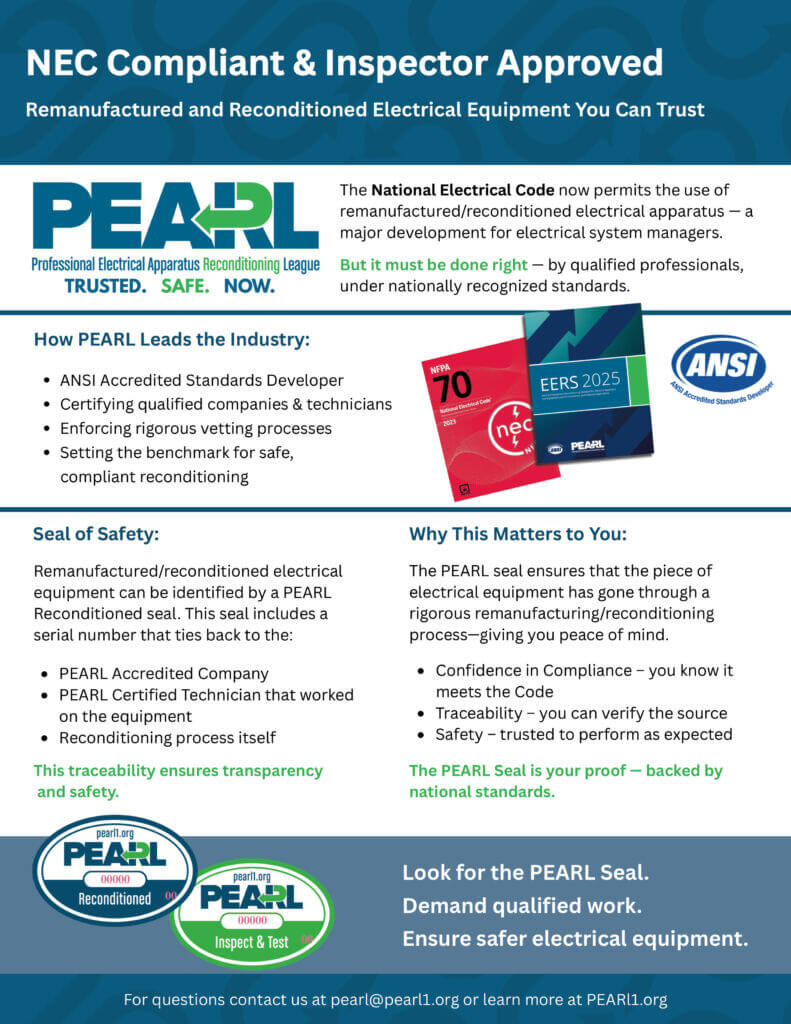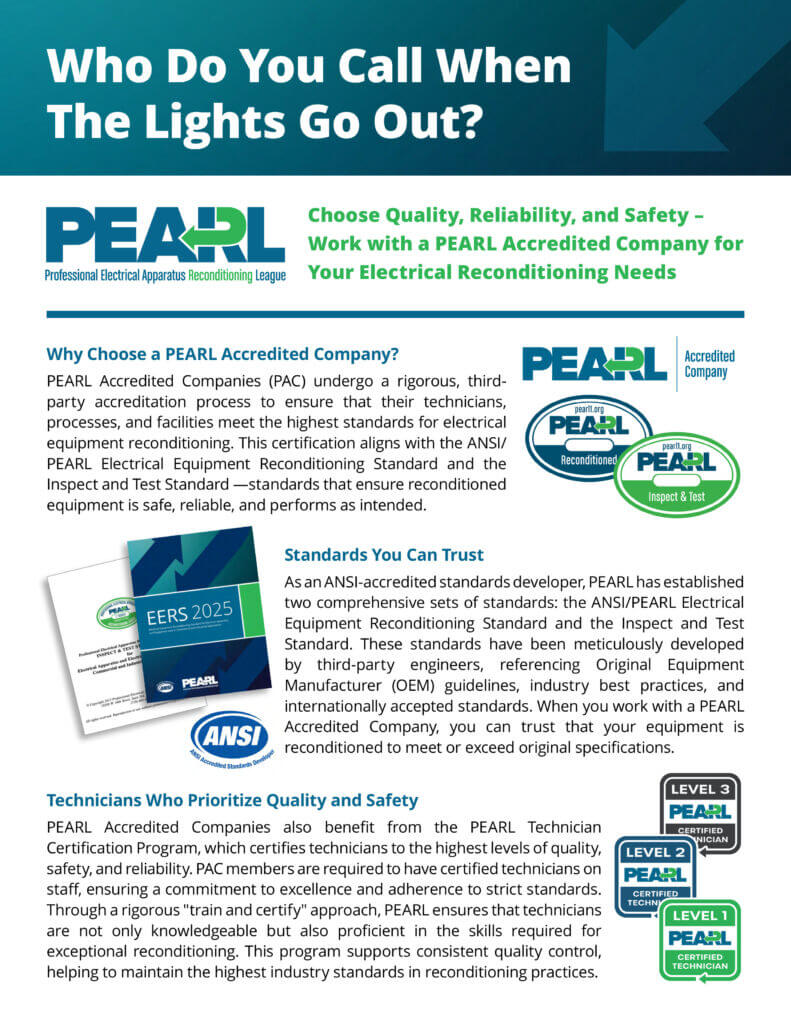Uncategorized
PEARL BOD Interview with Andy Conklin
Andy Conklin is a Manager at Southland Electrical Supply IPS Burlington, and a PEARL Board of Director. Southland Electrical Supply specializes in solutions. Since 1987, Southland has made a commitment to their customers that is simple: reliable products, reliable people and reliable services with the best value and the lowest prices.
Read MoreWhen Waiting for NEW Equipment is NOT an Option
Remanufactured and reconditioned electrical equipment you can trust. NEC compliant & inspector approved. Look for the PEARL Seal, demand qualified work, and ensure safer electrical equipment.
Read MoreNEC Compliant & Inspector Approved
The National Electrical Code now permits the use of remanufactured/reconditioned electrical apparatus — a major development for electrical system managers.
Read MoreWhy Work with a PEARL Accredited Company?
Choose Quality, Reliability, and Safety –
Work with a PEARL Accredited Company for Your Electrical Reconditioning Needs.
PEARL BOD Interview with Nick Milstead
Nick Milstead is Regional Vice President, Breaker Service Shops for Advanced Electrical & Motor Controls, and Vice President of PEARL. Advanced Electrical & Motor Controls are insulated case circuit breaker experts with the largest inventory and the experienced, skilled engineers and technicians capable of extending the life of your breakers.
Read MorePEARL Accredited Company Requirement for 2026
PEARL Accredited Company Requirement for 2026 As part of PEARL’s continued commitment to excellence, safety, and industry leadership, we are implementing an important new requirement for all PEARL Accredited Companies. Beginning January 1, 2027, all PEARL Accredited Companies will be required to have at least one Level 2 Certified Technician on staff. This decision is…
Read MorePEARL BOD Interview with Paul Jesson
Paul Jesson is a Project Engineer for Potomac Testing, and Secretary of PEARL. Potomac Testing, established in 1985, has earned its position as an industry leader in comprehensive low, medium, and high voltage electrical equipment services.
Read MorePEARL BOD Interview with Paul Grein
Paul Grein is a Vice President for Group CBS, and President of PEARL. Headquartered in Denton, Texas, Group CBS has affiliated companies throughout the U.S. and in the U.K. that provide premier products and unparalleled capabilities and services to the industrial, utility, electrical distribution, and repair markets.
Read MorePEARL BOD Interview with Kristen Jordan
PEARL BOD Interview with Kristen Jordan Kristen Jordan is President of North American Switchgear, Inc. Located in Cleveland, Ohio, North American Switchgear specializes in the sales and service (including all makes and vintages) of low and medium voltage circuit breakers, motor control, switchgear and replacement parts. How did you get involved in this industry and…
Read MoreWestern States Circuit Breakers, Inc. Certificate of Accreditation
Western States Circuit Breakers, Inc. Certificate of Accreditation
Read More









